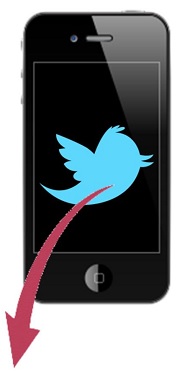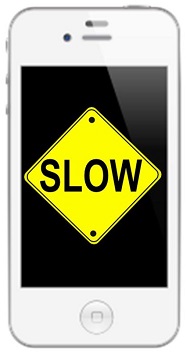Though the network’s new suite of ad products have been greatly hyped their performance is still lagging.
Even though Twitter’s newest suite of social media marketing products for mobile has experienced massive hype, it still appears that the microblogging network is falling behind its two giant competitors over this channel.
A recent report has shown that the ads from Twitter aren’t doing as well as Facebook and LinkedIn.
John Blackledge, an analyst from Cowen & Co. has reported that social media marketing ads on Twitter mobile are not performing as well as those that are posted on Facebook and LinkedIn. This suggests that Twitter may not be the dream ad opportunity that many of its investors have come to believe it to be. Blackledge explained that “Twitter is a popular social platform, but shares are too rich in our view.”
The focus on mobile social media marketing has reflected very positively in Twitter’s share prices.
The fall IPO price for Twitter shares in 2013 was $26. That said, by the end of December, that stock had exploded to $74 per share. Equally, though, the social network has not sustained the valuation.
Blackledge conducted some research making social media news, that involved fifty buyers and their opinions regarding the effectiveness of social media companies such as Twitter, and their mobile ads. Only 5 percent of the participants stated that Twitter provided the best ROI. Comparatively, the ads over Facebook were considered to provide the best performance by 60 percent of the participants, with 25 percent giving their applause to LinkedIn.
Those figures suggest that the low ROI is linked to pricing. Blackledge also pointed out that the respondents to his survey commented that some of the downsides of Twitter’s social media marketing tools with regard to advertising value proposition were “high minimum ad spend” and the “cost of campaigns”.
This year is supposed to be a defining one for Twitter, as its numbers and usage continues to grow. It will be interesting to see how today’s figures compare to those that will be generated later on in 2014 or those at the same time next year.
The post holiday rush caused nine of the top ten sites on the Keynote index to slow down.
The Keynote Mobile Commerce Performance Index has revealed that among the top ten sites, nine experienced slower than normal load times during the week that ended on January 5, as a result of heavy use by shoppers who were looking to find a great last minute deal following the official holiday season.
Shoppers continued to search for deals long after the holiday season had already come to a close.
Retailers experienced continued online sales both online and through mobile commerce as shoppers continued to return. This surge following Christmas and New Year placed considerable pressure on websites, particularly those meant for smartphones and tablets. It also added some strain to wireless carrier networks. The result was that page load times slowed down a little bit, according to Keynote’s data from that week.
This shows that online and mobile commerce holiday shopping doesn’t stop at January 1.
 Instead this mobile e commerce trend showed that shoppers will continue purchasing as the sales continue in through the first month of the year. This involves a mix of different types of purchases such as through exchanges, buying at discounted sale prices, or shopping with gift cards that were received at Christmastime.
Instead this mobile e commerce trend showed that shoppers will continue purchasing as the sales continue in through the first month of the year. This involves a mix of different types of purchases such as through exchanges, buying at discounted sale prices, or shopping with gift cards that were received at Christmastime.
Each of these individual trends adds its own amount of pressure to the overall mobile ecommerce scene. During that week, the average smartphone friendly site homepage load time among the 29 different retailers that make up the index was 7.62 seconds. When compared to the week before, this was slower by 0.62 seconds.
During that week, Sears Holdings Corp. managed to top the index, with a load time of its mcommerce home page load time of 3.13 seconds. Its success rate was a tremendous 100 percent. This earned the company a very strong 986 score out of a possible 1,000 on Keynote’s index.
This was achieved through a light mobile commerce homepage weight of 61 kilobytes made up of only 8 elements. Typically, Keynote’s recommendation is that a site contain only a maximum of 10 to 12 elements (for example, scripts and images) and that it weigh no more than 61 kilobytes to ensure optimal performance.


 Instead this
Instead this 